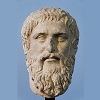7: Western Europe and Byzantium (Middle Ages)
- Page ID
- 132365
\( \newcommand{\vecs}[1]{\overset { \scriptstyle \rightharpoonup} {\mathbf{#1}} } \) \( \newcommand{\vecd}[1]{\overset{-\!-\!\rightharpoonup}{\vphantom{a}\smash {#1}}} \)\(\newcommand{\id}{\mathrm{id}}\) \( \newcommand{\Span}{\mathrm{span}}\) \( \newcommand{\kernel}{\mathrm{null}\,}\) \( \newcommand{\range}{\mathrm{range}\,}\) \( \newcommand{\RealPart}{\mathrm{Re}}\) \( \newcommand{\ImaginaryPart}{\mathrm{Im}}\) \( \newcommand{\Argument}{\mathrm{Arg}}\) \( \newcommand{\norm}[1]{\| #1 \|}\) \( \newcommand{\inner}[2]{\langle #1, #2 \rangle}\) \( \newcommand{\Span}{\mathrm{span}}\) \(\newcommand{\id}{\mathrm{id}}\) \( \newcommand{\Span}{\mathrm{span}}\) \( \newcommand{\kernel}{\mathrm{null}\,}\) \( \newcommand{\range}{\mathrm{range}\,}\) \( \newcommand{\RealPart}{\mathrm{Re}}\) \( \newcommand{\ImaginaryPart}{\mathrm{Im}}\) \( \newcommand{\Argument}{\mathrm{Arg}}\) \( \newcommand{\norm}[1]{\| #1 \|}\) \( \newcommand{\inner}[2]{\langle #1, #2 \rangle}\) \( \newcommand{\Span}{\mathrm{span}}\)\(\newcommand{\AA}{\unicode[.8,0]{x212B}}\)
- 7.2: Expansion of Christendom
- In the Middle Ages, the people of Western Europe did not think of Europe as a geographic and cultural area. Rather, they thought of Christendom, those peoples and nations of the world that embraced the Christian religion. We might compare it to the Muslim notion of Dar al-Islam. In eleventh century, Christendom expanded into the north and east. In Spain, Christian kingdoms practiced what would be known as the Reconquista at the expense of Muslim al-Andalus.
- 7.3: Church Reform in the Eleventh Century
- By the eleventh century, Europe suffered from frequent violence and the Church itself was in a sorry state. For example, Pope John XII was so infamous for his immorality. From the mid-eleventh century, both popes and other clergymen would seek to reform both the institutional structures of the Church and Christian society as a whole.
- 7.10: Later Crusades and Crusading's Ultimate Failure
- After the Third Crusade, the re-established Crusader States managed to survive and even expand in power for the next several decades. Syria and Egypt were split between Saladin’s heirs, and the crusader kingdoms often enjoyed good relations with Ayyubid Egypt. Indeed, in 1229, a truce worked out between Holy Roman Emperor Frederick II and the Egyptian sultan al-Kamil resulted in the city of Jerusalem returning to Christian rule.
- 7.4: The Twelfth Century in Western Europe
- In the twelfth century, many of Europe’s kingdoms saw a gradual centralization of state power.
- 7.5: The Twelfth-Century Renaissance
- The Twelfth-Century Renaissance was a time of renewed vibrancy in intellectual activity, as well as witness an immense growth of interest in philosophy on the part of men (and a few women) who had a formal education. Events in Southwestern Europe would spur this renewal.
- 7.6: The Crusades
- On the surface, the Byzantine Empire of the eleventh century looked like one of the world’s great powers. It dominated the Eastern Mediterranean, with its emperors reigning from Constantinople, a city full of magnificent churches, splendid palaces, and centuries-old monuments of an ancient empire.
- 7.7: Empires- Recovery and Collapse
- In the early part of the twelfth century, power in the Holy Roman Empire decentralized, while the cities of northern Italy were increasingly governing themselves. The Holy Roman Emperor Frederick Barbarossa (r. 1152 – 1190) sought to arrest this decline and make his subjects adhere to his authority.
- 7.8: The Third Crusade
- The Crusader States had endured from 1099 to 1187 because the Muslim Middle East was politically fragmented. Once Saladin had overthrown Egypt’s Fatimid Caliphate and united Egypt to Muslim-controlled Syria and northern Iraq, he was able to turn his resources to destroying the Crusader States. Eventually, at the 1187 Battle of Hattin, his forces met the combined forces of the Kingdom of Jerusalem. The result was a complete victory for Saladin. With the manpower of most of the Kingdom of Jerusale
- 7.9: The Fourth Crusade
- While Jerusalem remained under Muslim control, the papacy’s goal was to retake it. In 1198, one of the most ambitious popes of the Middle Ages was elected:Pope Innocent III (r. 1198 – 1216). His goals were to morally reform society and to launch a crusade for retaking the holy city of Jerusalem. In the year of his election, he issued a call to a crusade that ended up as a disaster.
Thumbnail: Baldwin of Boulogne entering Edessa in 1098 (history painting, Joseph-Nicolas Robert-Fleury 1840). (Public Domain).


